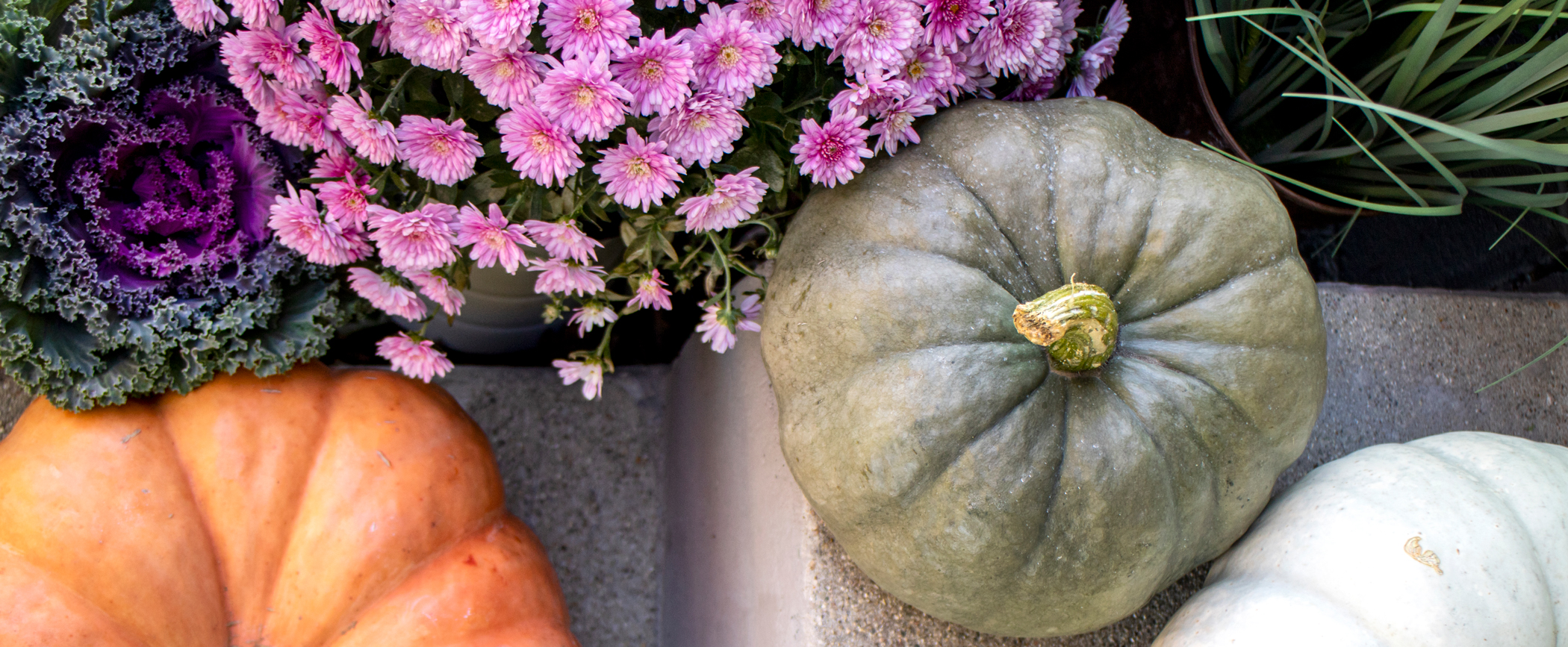FREE delivery in the contiguous US!
What Flowers to Plant in the Fall
Share this article
0 comments
When you want to embellish your outdoor space for the season, traditional fall decorations like pumpkins, haystacks, and cornstalks are great choices. However, adding a verdant garden featuring a mix of flowers, flowering shrubs, and other fall flora alongside them can accentuate your home’s autumnal appeal.
There’s a variety of colorful annuals and perennials to choose from, each with its pros and cons, so keep reading to learn which plants are the best choices for your fall flower garden.
Deciding Between Annual and Perennial Flowers
Annuals
Annuals are plants that germinate, grow, bloom, seed, and die in one growing season—specifically when the first frost hits. Biennial plants are similar, but they take two years to complete their lifecycles. They grow leaves, stems, and roots in the first season, then bloom and produce seeds in the second before dying.
Pros
- Inexpensive: Compared to perennials, annuals are affordable, whether purchased as seeds or seedlings.
- Short lifespan: Depending on your perspective, their short lifespan is a benefit. Each year, you have a chance to change up your landscaping look.
- Color variety: Annuals come in a rainbow of colors, from soft pastels to vibrant neons.
- Fast growth: If you want to fill your flower beds fast, annuals are ideal.
Cons
- Short lifespan: Annuals need to be replanted each year, which can be a hassle if you don’t have much time to dedicate to your garden.
- Cold-sensitive: Most annuals can’t handle chilly conditions. If you live in a cold climate, annuals may not be the best choice.
- High-maintenance: Annuals need constant care to keep them looking good. This means frequent fertilizing, watering, and deadheading.
Perennials
Perennials are types of plants expected to live longer than two years. They’re usually larger and more substantial than annuals.
Pros
- Long lifespan: Perennials continue to grow back every season, getting bigger and better.
- Durability: Several perennials can endure adverse weather conditions, even cold winters.
- Low-maintenance: Many perennials need little upkeep other than periodic pruning and fertilizing.
- Less watering: Once established, perennials don’t need much water—an excellent choice for drought-ridden areas.
Cons
- Slow growth: These plants don’t grow as fast as annuals. Some even take years to reach full bloom.
- Initial cost: Perennials may have a higher upfront cost than annuals, but they offer a better return on investment since they don't need to be replanted annually.
- Size: Perennials are larger than annuals, so keep this in mind if your green space is limited.
Popular Annuals to Plant in Fall
Consider these flowers for your autumn garden.
Chrysanthemum
Chrysanthemums—or simply mums—are favored fall flowers. Their radiant blooms come in eye-popping bursts of red, orange, yellow, white, peach, purple, and more. Mums need full sunlight and well-drained soil to thrive. They also have shallow roots, which means they require more watering than other plants.

Pansy
Pansies come in a wide range of colors, including orange, yellow, white, purple, red, and blue. They’re ideal for plant beds, borders, and containers. Plant them in rich, moist soil in a spot with full sun to partial shade.

Ornamental Cabbage
Despite the name, ornamental cabbage isn’t edible. It’s actually a green and purple plant that can handle cooler temperatures, making it an excellent addition to flower beds and pots. This plant thrives in moderately moist, rich soil under full sun.

Popular Perennials to Plant in Fall
Here are some popular perennials you should consider incorporating into your garden this fall.
Aster
Similar in looks to daisies, asters boast traditional fall colors as well as other unexpected hues like lavender and pink. Plus, these plants attract butterflies that your kids can spot and identify. Like mums, asters require full sun and well-drained soil to grow.
Sumac
The sumac shrub's crimson colors make it eye-catching for fall. It grows well in a variety of properly draining soils and needs consistent sunshine.
Oriental Lily
Oriental lilies add color and aroma to your fall garden. These perennials can grow up to six feet tall in well-drained soil and produce happy hues such as pink, orange, red, cream, white, and yellow. Keep oriental lilies in a sunny to partially sunny spot.

Sedum
To minimize garden upkeep this fall, choose sedums, also known as “stonecrops.” These hardy plants come in various colors, shapes, and sizes. Be sure to plant them in a sunny, well-drained location.

